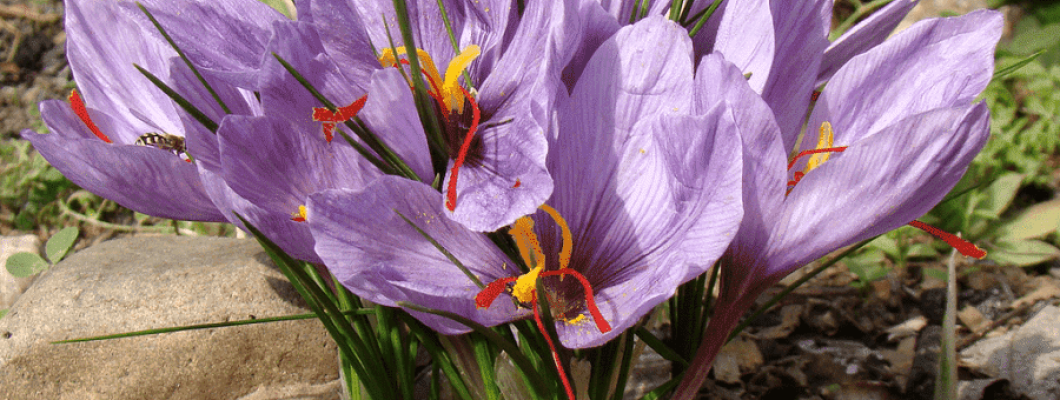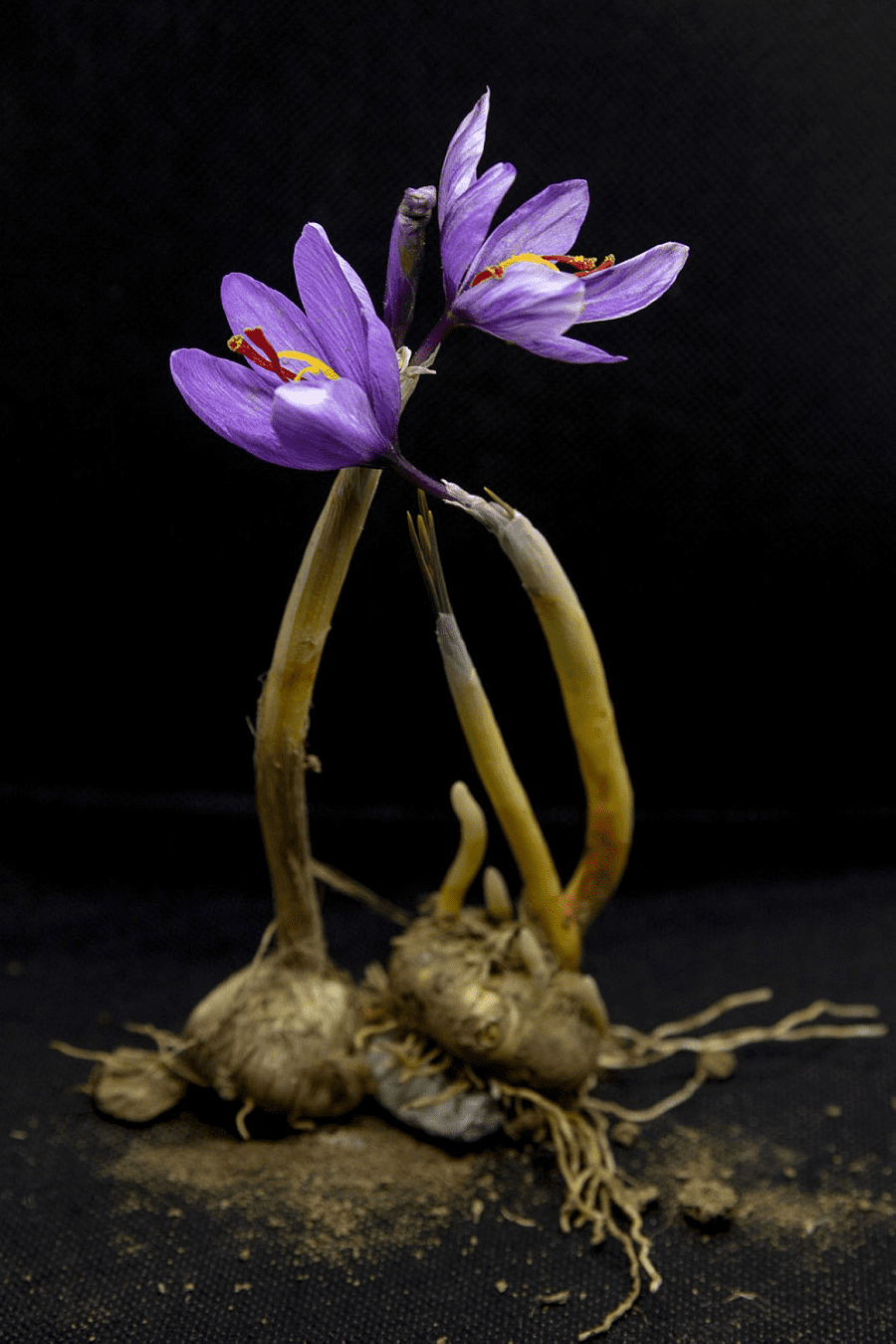
The Process of Saffron Production: Insights into Farming Techniques
Chefs have used Spices in cooking since cavemen. But this spice is extraordinary. This is saffron. It costs as much as gold, and it takes 160 thousand flowers to make 1 kilogram. In this section, we want to discover saffron production.
Persian lands. Sun! Desert! And spices! These, plus unique soil, make this land special for growing beautiful Crocus Sativus flowers. Saffron farmers implant Crocus bulbs in September. The temperature here regularly is top 30 degrees Celsius. So, these bulbs need water to grow. Here, the solution is digging regular channels to deliver Aqueduct water into the fields. Six months after the first irrigation, flowers are ready for harvest. But this is not only harvest. During the day, the sun opens the flowers, and the stigma comes out. This spoils the valuable spice. On the other hand, the petal is still closed after a dark and cold night, and it's the right time to pick them up before sunrise. It takes four-hour continuous and hard work to pick flowers for 1 kg saffron.

Then, individuals should remove the stigma from flowers. It is a detailed process to provide three strands of saffron from each flower. Each stigma is around 0.002 grams, and three stigmas weigh 0.006. it means having one kilogram of all red saffron should remove 500,000 stigmas from flowers. Finally, it is ready for sale after putting stigmas in a dry and hot room for around 20 hours. Local farmers sell their harvest to saffron company agents.
- Saffron farming involves specific techniques and practices to ensure the successful cultivation of this valuable spice. Here are some key aspects of saffron farming:
- Soil Preparation: Saffron thrives in well-drained soil with good organic content. Prior to planting, the soil is typically tilled and enriched with organic matter to enhance its fertility and structure.
- Crocus Sativus Cultivation: Saffron is cultivated from the Crocus sativus bulbs, which are planted in shallow furrows or beds. The bulbs are usually spaced a few inches apart to allow room for growth and development.
- Harvesting the Stigmas: Saffron production primarily involves the hand-harvesting of the delicate stigmas of the Crocus sativus flower. This process requires great precision and care to ensure the stigmas are not damaged during collection.
- Drying and Processing: After harvesting, the saffron stigmas are carefully dried to reduce moisture content and preserve their flavor and aroma. This is typically done by spreading the stigmas in a thin layer and subjecting them to gentle heat.
- Storage and Packaging: Once dried, saffron is stored in airtight containers away from light and moisture to maintain its quality. It is then packaged in appropriate quantities for distribution and sale.
- Crop Rotation: To maintain soil health and minimize the risk of diseases, saffron farmers often practice crop rotation. This involves alternating saffron cultivation with other compatible crops on the same land.
- Irrigation and Water Management: Saffron requires regular watering, especially during the growing season. However, excess moisture should be avoided to prevent bulb rot and fungal diseases. Proper water management techniques, such as drip irrigation, are often employed to optimize water usage.
- Pest and Disease Control: Saffron plants are susceptible to certain pests and diseases. Integrated pest management techniques are commonly used, which involve a combination of biological control methods, cultural practices, and, if necessary, targeted pesticide applications.
Successful saffron farming requires knowledge, experience, and attention to detail. It is a labor-intensive process that demands careful monitoring and timely actions to ensure optimal yield and quality. By following these farming techniques, saffron farmers can cultivate this precious spice and contribute to its availability in the global market.

Want to know about the saffron price and how to buy saffron? Click here





%20-%20100%20g-2-190x190.jpg)
%20-%2023%20g-1-190x190.jpg)
%20-%2010%20g-1-190x190.jpg)
Leave a Comment